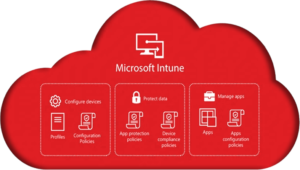Workflows in Service Manager can help get your incidents to the proper support group. Workflows can be based on almost any attribute that Service Manager can read, whether they be from Active Directory, SCCM, or Operations Manager.
Possible Uses
If you have a distributed IT environment, workflows can make managing incidents much easier. Examples of a “distributed” environment might be a campus where different personal support different building, or a worldwide organization with offices across counties. It pretty much means any environment where different support groups support different users. This method will use an AD attribute. The same process can be used for any AD attribute.
Another example of how this may be helpful is different support groups for different services. You may have a general end-user support group, and then a support group that repairs multifunction printers/copiers. You can set up a workflow so that any incident involving an MFP goes straight to the MFP group, which should allow your support personal to respond quicker.
Finally, if you have a call-in help desk, chances are they can fix a lot of problems with access, such as a disabled account or a password reset. This can be another workflow, directing any incidents with access problems straight to the help desk.
Site Based Workflow (AD Attribute)
We will start with a site based workflow. This is for general incidents that go to a support group devoted to a particular region. This region can be different buildings on a campus, or sites around the world. The easiest method is to use the “Office” attribute in AD. For worldwide companies, you may also be able to use time zone or country, depending on how your environment is set up.
The first thing we need is a support group to assign the incidents too. Create a new support group in the “Incident Tier Queue” list. I am going to call mine “West Campus”. It will include all building assign to my west campus.
Next, we need to create an Incident Template that assigns this support group. To do this, simply copy the default incident template, name it something meaningful, and change the “Support Group” option to your new support group.
Now we can create our workflow. Go to the Administration tab, expand the Workflows node, and select “Configuration”. Select “Incident Event Workflow Configuration” and add a new one. Click through the wizard and give your workflow a name. I recommend keeping it simple – since this is for my west campus, I named mine “West Campus”. On the “Specify Event Criteria” page, expand “Incident” and select “Affected User”. The end-user’s building information is stored in my “Office” AD attribute, so I check that attribute and click “Add”. I would change the adjective to “equals” and be specific about the building name, but that’s totally up to you. We can add multiple buildings or criteria here. Once you set your criteria, click Next. My west campus is made up of Building 1 and Building 2, so here is what my criteria looks like:
Next, we need to apply the template we created that assigns the correct support group. To do that, select “Apply the following template”, select the template, and click Next.
You now have your workflow created. The final screen allows you to enable notification. Do this as required by your organization. Keep in mind that process is not limited to region assignment. The same method can be used with any AD attribute. This process will automatically assign the incident to the correct group without the end-user having to select anything in the portal about their location.
Services / Help Desk
Next we will look at a service. I will use copiers and printers for this example. This method can be used for any support group that is dedicated to a particular service, such as copier repair or help desk operations.
I use the “General Incident Request” request offering for this. The user is prompted to select the issue type that maps back to the “Classification Category” field. When the “Copier Repair” category is selected, a workflow kicks in that routes the incident to the correct support group.
To get started, we need to add a new classification category. To go this, go to the “Incident Classification” list and add your new category.
Next, create a new workflow. Give it a meaningful name. For “Specify Even Criteria”, select “Classification Category” and type in your category name.
Next, select a template. I recommend creating one for this, just as we did in the site workflow. Finally, set up notifications according to your organization’s requirements.
I hope this helps you get started with workflows in Service Manager.





